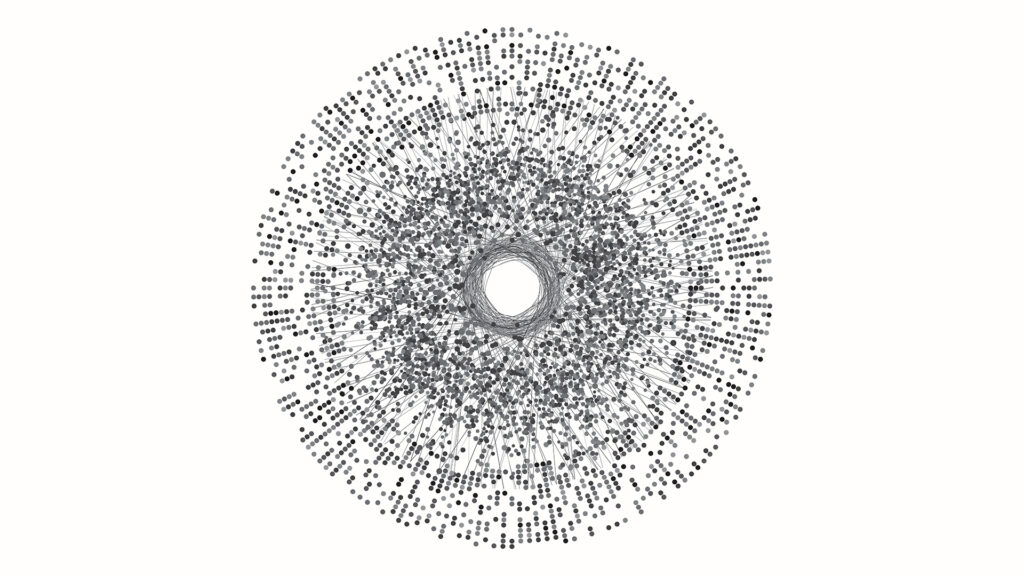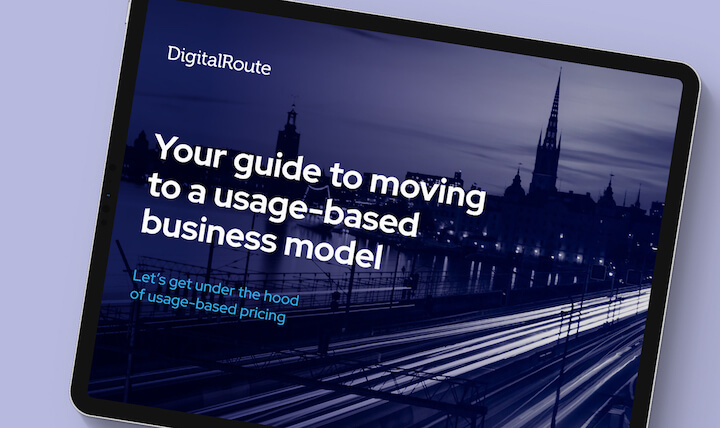5G
In telecommunications, 5G is the fifth generation of cellular networks and is the successor to 4G.
What Is 5G?
5G, short for fifth generation, is the latest wireless communication technology standard for cellular networks. It succeeds the previous generation, 4G LTE, and offers significantly faster data transfer speeds, lower latency, and increased capacity. 5G is designed to provide a more reliable and responsive network connectivity experience, enabling new use cases and applications.

What Are the Applications of 5G?
The applications of 5G technology are expanding rapidly as industries and businesses discover new ways to leverage its capabilities. These examples highlight the transformative potential of 5G across various sectors.
Mobile Broadband
5G provides significantly faster download and upload speeds, allowing for high-quality streaming, augmented reality (AR) and virtual reality (VR) experiences, and immersive gaming on mobile devices.
Artificial Intelligence (AI) and Internet of Things (IoT)
With its high capacity and ultra-low latency, 5G enhances AI and IoT applications in industries such as healthcare, transportation, manufacturing, and agriculture. This includes improvements in areas like remote healthcare, safer transportation, precision agriculture, and digitized logistics.
Enhanced Retail Experiences
5G technology enables immersive shopping experiences through AR and VR, personalized interactions with real-time customer data, smart retail solutions utilizing IoT devices and sensors for efficient inventory management, and enhanced mobile shopping experiences with faster speeds for smooth browsing and streaming.
Public Safety
5G enhances public safety through faster communication, high-resolution video streaming for surveillance, real-time data from IoT devices, AR/VR training, edge computing for faster analysis, and mission-critical communications. These advancements improve situational awareness, response times, and coordination among public safety organizations, increasing community safety.
Telemedicine
In remote areas, 5G can provide secure access to health services through telemedicine platforms, ensuring remote and secure access to healthcare.
Industrial Applications
5G can bring efficiency to the production and intralogistics processes in smart factories, leading to improved productivity and automation in industries adopting Industry 4.0 practices.
Smart Cities
5G enables smart city applications such as smart grids, intelligent transportation systems, and efficient public services.
Augmented Reality (AR) and Virtual Reality (VR)
5G enhances AR and VR experiences by delivering high-quality, real-time content with minimal latency.
Energy and Utilities
5G enables rapid internet connectivity, smart grid operations, and real-time monitoring for efficient maintenance and improved uptime. Utility companies can remotely manage energy usage, integrate renewable energy sources, and optimize distribution.
Education
5G improves internet connectivity, allowing access to online resources and virtual classes. It enables immersive learning through VR and AR technologies. With high-quality video conferencing, it supports remote learning. Mobile devices can be used for accessing educational resources. Real-time collaboration and personalized learning are also facilitated through 5G.
Media and Entertainment
The media and entertainment industries are reaping the benefits of 5G as it allows high-quality streaming experiences, virtual concerts, realistic AR/VR experiences, faster content production and distribution, interactive advertising, and enhanced collaboration for user-generated content.
Agriculture
5G offers improved connectivity in rural areas, enabling precision agriculture techniques like remote monitoring, drone-based crop management, and livestock tracking.
These are just a few examples of the diverse use cases that 5G technology can enable, revolutionizing industries and transforming the way we live and work.
What Are the Key Benefits of 5G?
High-Speed Connectivity
5G networks provide significantly faster speeds than previous generations, with peak speeds expected to be up to 100 times faster than 4G LTE networks. This rapid data transfer enables quick downloading and streaming of large files and high-definition content.
Lower Latency
5G reduces latency, the time it takes for data to travel between devices and networks. This quick response time enables real-time applications like remote surgery and virtual reality experiences without noticeable delays or lags.
Increased Capacity
5G networks have a much higher capacity to handle many devices simultaneously. This improved capacity supports the growing number of connected devices in our everyday lives and ensures smooth connectivity even in densely populated areas.
Enhanced Internet of Things (IoT) Connectivity
5G enables seamless connectivity for IoT devices by providing low-power, low-latency connections. This allows for efficient monitoring and control of smart homes, smart cities, industrial automation, and other IoT applications.
Support for Emerging Technologies
5G technology provides a foundation for emerging technologies like augmented reality, virtual reality, and artificial intelligence. The high-speed and low-latency nature of 5G enhances the user experience and enables the development of innovative applications in various industries.
Improved Reliability
5G networks are designed to be more reliable and resilient, with advanced techniques for error correction and network management. The reliability of 5G ensures consistent connectivity even in challenging environments.
What Are the Challenges and Limitations of 5G?
Deployment Complexity
Deploying 5G networks is complex, expensive, and requires significant infrastructure upgrades, investments, and regulatory approvals. The building of required infrastructure such as small cells, base stations, and fiber optic networks can also be expensive, and it requires the cooperation of multiple stakeholders such as government, regulatory bodies, and private companies.
Limited Coverage
5G networks have limited coverage compared to 4G and other legacy wireless networks. This is because the high frequency bands used by 5G don’t travel far and can be blocked by objects such as buildings, trees, and walls. As a result, it requires more cell sites and a denser network to achieve a similar coverage area.
Compatibility Issues
5G networks are not fully compatible with legacy devices, so devices without 5G capabilities may not be able to connect. This can lead to interoperability challenges and user experience issues.
Higher Energy Consumption
5G devices and infrastructure require more energy than 4G and other legacy networks due to the increased data transfer and processing capabilities. This could lead to higher carbon emissions and overall energy costs.
Cybersecurity Concerns
5G networks pose new cybersecurity challenges such as the risk of unsecured devices connected to the network that could be used for illegal activities, data breaches, or network disruptions.
Increased Data Consumption
With the higher speeds provided by 5G, there is a potential for increased data consumption. This could result in greater pressure on network bandwidth and data storage systems.
Data Privacy and Security
The massive amount of data generated by 5G devices creates concerns about data privacy and security, especially with the increased number of connected devices. There is a need for robust encryption, authentication mechanisms, and secure data handling procedures to ensure the protection of sensitive data.
Backhaul Capacity
5G requires a robust and scalable backhaul infrastructure to handle the increased data traffic. Insufficient backhaul capacity can lead to congestion and reduced performance.
Network Slicing Management
5G introduces the concept of network slicing, which allows the creation of virtual networks that can be customized for specific applications or user groups. However, managing and maintaining these virtual networks can be complex, as it requires efficient allocation of network resources and monitoring of network slices to ensure adequate performance and quality of service for each slice.
Interoperability Challenges
5G introduces new technologies and protocols, and there may be compatibility issues between different vendors’ equipment. Ensuring interoperability between different components and devices within a 5G network can be a challenge.
What Is NWDAF?
NWDAF, which stands for Network Data Analytics Function, is a component in 5G network architecture. Its main role is to collect and analyze data from different sources within the network.
The purpose of NWDAF is to provide real-time analytics and insights that can be used to optimize network performance, improve user experience, and support network management functions. By utilizing data analytics techniques, NWDAF helps in making intelligent decisions for network optimization, resource allocation, and network slicing. Overall, NWDAF plays a crucial role in leveraging data analytics to enhance the efficiency and effectiveness of 5G networks.
What Are the Current Trends in 5G?
Deployment of Integrated Private Networks
There is a trend towards deploying integrated private 5G and Wi-Fi networks. This allows organizations to have more control over their network infrastructure and improve connectivity in specific locations.
Space-Based 5G connectivity
Companies like Vodafone and AST SpaceMobile are demonstrating the feasibility of space-based 5G connectivity. Through test satellites, they have successfully established 5G connections over long distances, showcasing the potential for global coverage.
Conclusion
5G technology presents a multitude of possibilities for various industries and sectors, revolutionizing the way we connect, communicate, and experience the digital world. Its benefits in terms of speed, latency, capacity, and support for emerging technologies are undeniable. Nonetheless, it is important to address the challenges associated with deployment, coverage, compatibility, and security. As the deployment of 5G continues to evolve, we can expect to see trends towards integrated private networks and space-based connectivity experiments, further shaping the future of this transformative technology.
Related Terms
Communication Service Provider (CSP)
People also ask
How fast is 5G?
5G speeds vary based on factors like carrier, location, and infrastructure. US median speeds are around 100 Mbps. T-Mobile is the fastest with speeds near 200 Mbps. Verizon averages 67.1 Mbps, T-Mobile around 71 Mbps, and AT&T varies between 64-111 Mbps. Speeds may change as 5G evolves, focusing on reduced latency and quicker response times.
What is the difference between 4G and 5G?
5G is faster than 4G, using higher-frequency bands for increased data capacity, lower latency, and better bandwidth. It's ideal for IoT and includes advanced features like network slicing to customize resources for different services.
What is 5G network slicing?
5G network slicing enables virtual networks within shared physical infrastructure, allocating resources to services. It tailors the network experience to meet industry and use case requirements, optimizing performance and supporting diverse applications like autonomous vehicles and smart factories. Network slicing enhances service quality, flexibility, efficiency, and innovation in the IoT era. By leveraging network slicing, operators can optimize their network to support a wide array of services and applications with tailored performance characteristics. Each network slice can be designed to meet the specific needs of different applications, such as autonomous vehicles, remote surgery, or smart factories, by providing them with the necessary resources and configurations. This level of customization not only enhances the quality of service but also fosters flexibility, efficiency, and innovation, unlocking the full potential of the Internet of Things (IoT) technology and paving the way for a more connected and advanced digital future.



